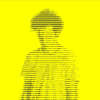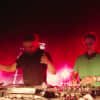Jean-Luc Godard made films for a generation raised on Marx & Coca Cola, but it's damn near impossible to name the innumerable icons to which to reduce ours, a generation that witnessed the quick rise and death of the MTV music videos, but is remorselessly happy to download hours of them off Mediafire. It's obvious to say that imitation is no longer the greatest form of flattery, but amidst the wash of professional, high-budget videos that slyly pilfer other people's content, there's something irresistible about those that just flat out take it. Fan videos fill a much-needed gap, creating a visual world for music that often does not have one (or at least not yet).
A curious crop of video makers—loosely connected by a rippling Ven diagram of internet influences—has emerged with their sights set broadly on The French New Wave and its surrounding orbit. This is unsurprising. The tenets of the genre—the emphasis on making-do and irreverent self-consciousness, not to mention the stylistic boon of long tracking shots and jump cuts and pop culture references that lend themselves so well to music—pair effortlessly with the songs they're set to, music that's a little scrappy and off the radar, but that draws its own large and devoted audience. Artists like Bethany Cosentino of Best Coast (whose most recent video was directed by Drew Barrymore, of all people), even credits some of her early fan videos with helping to launch her career. Like this clip from khole71, which uses clips from the follow up to Jaques Demy's wildly popular The Umbrellas of Cherbourg, The Young Girls of Rochefort.
Fan video makers like khole71, George Tanasie and David Dean Burkhart often quoting quintessential New Wave directors like Jean-Luc Godard and left bank New Wave affiliate, Alan Renais, and vacillate between splicing and resequencing footage to just straight up isolating a full scene, like in Tanasie's video for Elite Gymnastics’ "Here In Heaven 2," set to the final sequence of Godard's Breathless (save for the very last second where Jean Seberg looks directly at the camera).
These videos are peculiar in that they've taken films that were deeply and self-consciously styled and scored (The Young Girls of Rochefort is a musical, after all), with music playing an integral role in each scene. Here is the audio sequence for the same film sequence above, featuring Martial Solal’s original score.
George Tanasie used the very beautiful opening sequence of Alain Renais' Hiroshima Mon Amour for HTRK’s "Poison." The original (and superior) soundtrack was composed by Georges Delerue.
Many of these films also have the added benefit of casting ageless muses like Seberg, Anna Karina and Catherine Deneuve. Karina, who was married to Godard during the time he made some of his most memorable films (including his ode to her, A Woman Is A Woman), appears frequently. Pierre Koralnik's 1967 made-for-TV movie Anna is a favorite for both Tanasie and Burkhart, who each sequenced segments of the film to Cults’ "Abducted" and Class Actress’ "Keep You," respectively.
The original is features music by Serge Gainsbourg:
It also works the other way around. Certain artists like Grimes seem strangely well-suited to these movies. Burkhart uses Godard's sci-fi classic Alphaville exclusively for "Vanessa," cutting up the film into a mish-mash sequence to surprisingly good effect.
And Jose Molina uses Roman Polanski's Repulsion (also available in a pink version) for Grimes' "Oblivion":
Rory Harsh prefers Grimes' "Venus in Fleurs":
Falentin’s video for Burial and Four Tet features clips from Godard's Une Femme Mariée and Adolf Winkelmann's Die Abfahrer, which, appropriate to the spirit of collaboration, he's spliced together.
Tanasie uses Philippe Garrel's short film La cicatrice intérieure for Widowspeak’s "Harsh Realm":
And Sean Omlor sets Garrel's silent film Le révélateur, to Jim James’ cover of George Harrison's "Long, Long, Long"
Burkhart ranges slightly askew, wandering outside the sanctioned realm of New Wave, but the spirit remains, like in his videos for Purity Ring’s "Lofticries" and Chairlift’s "Amanaemonesia," which is filmed alongside clips of Jack Cardiff's Girl On A Motorcycle (starring Marianne Faithful).
IamNoSuperman’s video for Real Estate's "Easy" is perhaps the most far-removed from France and its New Wave, but this video features scenes from Haro Senft's 1973 West German film, Mondtag, and it is awesome:
Maybe it's true that what once was scrappy and renegade for an earlier generation, is now the nostalgic appropriation of today. But for those who love the New Wave (obviously guilty) and a lot of the music sampled in these videos (guilty, again), the fact that this music and these films are finding each other feels like kismet. Supporting fan videos is really just another way of supporting the larger music experience, and if these videos make you want to go out and see Hiroshima Mon Amour, you're all the better for it. After all, sometimes the fans grow up to make the real thing.


